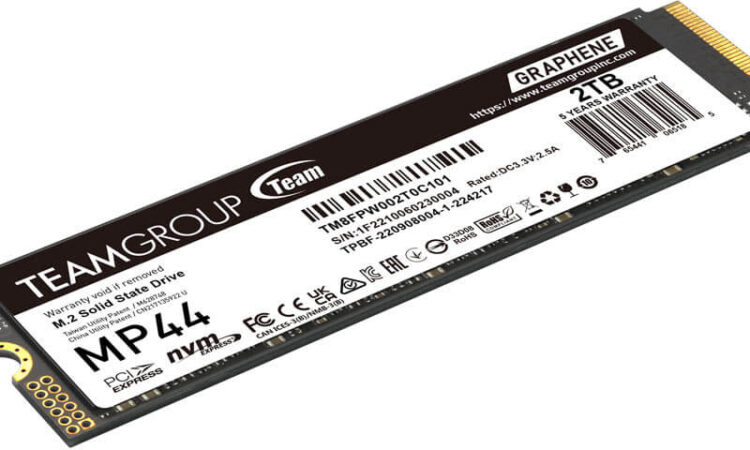Benchmarks
We tested the drive with KDiskMark, a free and open source graphical frontend to Flexible I/O. The software provides an easy to view and interpret comprehensive benchmark result.
We benchmarked the SSD using a desktop with an ASUS motherboard and Intel 13th generation CPU, 64GB of RAM and an NVIDIA GeForce discrete graphics card. We also tested the SSD in an Intel NUC 13 Pro Mini PC mostly to see how well the graphene heatsink copes from a temperature perspective in a confined case.
Here are the results for the MP44 2TB NVMe with the 13th generation machine. The MP44 is a low cost NVMe which doesn’t have DRAM caching. We’ve also benchmarked a couple of similarly prices drives (the Fanxiang S880 and Lexar NM710), as well as a more expensive Crucial NVMe, which is the only drive here with DRAM cache.
For benchmarking purposes, the drives are used as storage only, with the operating system (Linux of course) running on a separate drive. We’ve included a PCIe 3.0 NVMe for comparison purposes which may be useful if you are thinking of upgrading to a PCIe 4.0 NVMe.
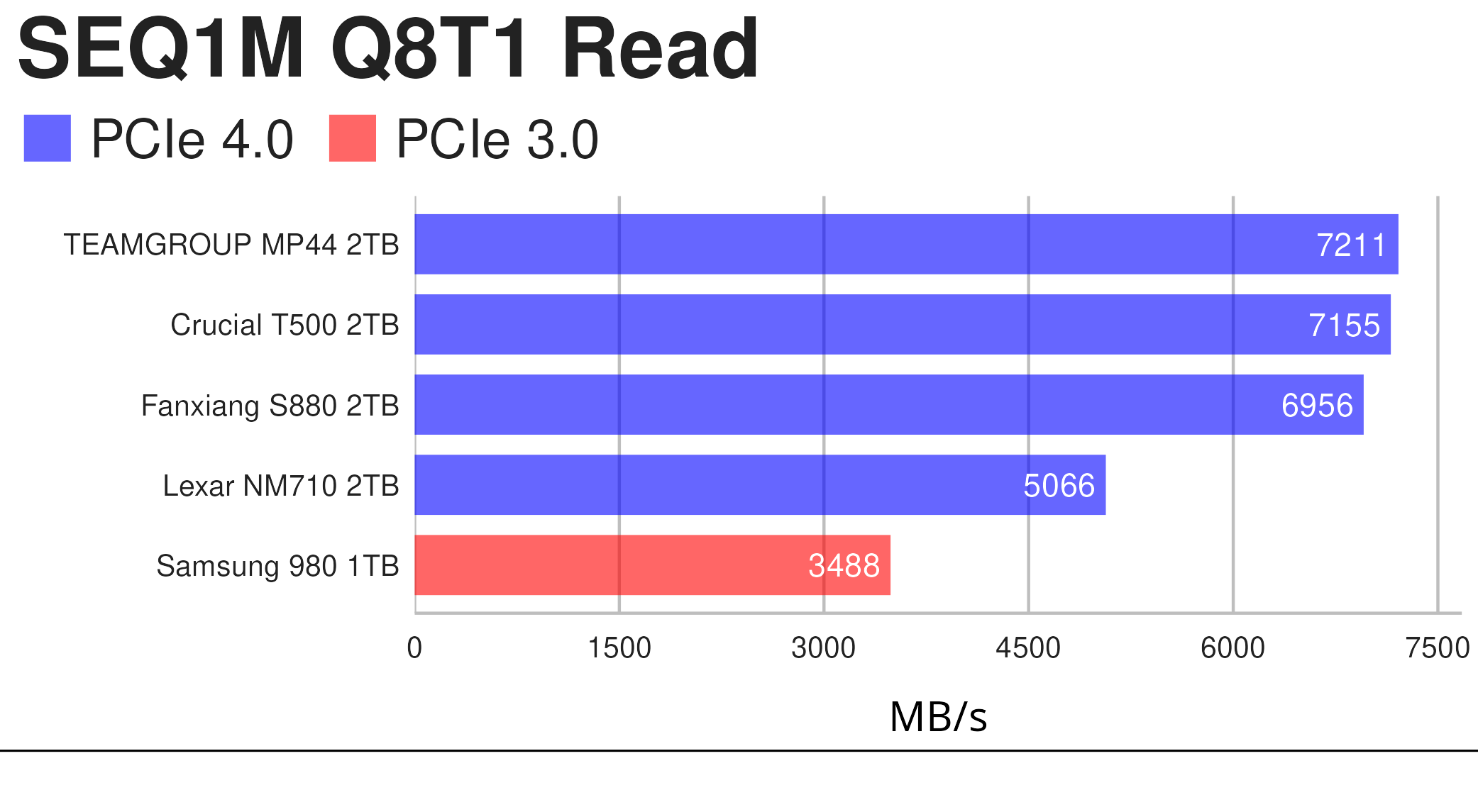
A great start for the TEAMGROUP MP44. In this synthetic benchmark, the MP44 is fastest in terms of sequential throughput. It comes very close to its advertised maximum speed of 7,400MB/s. This score is useful for tasks like high-resolution video editing.
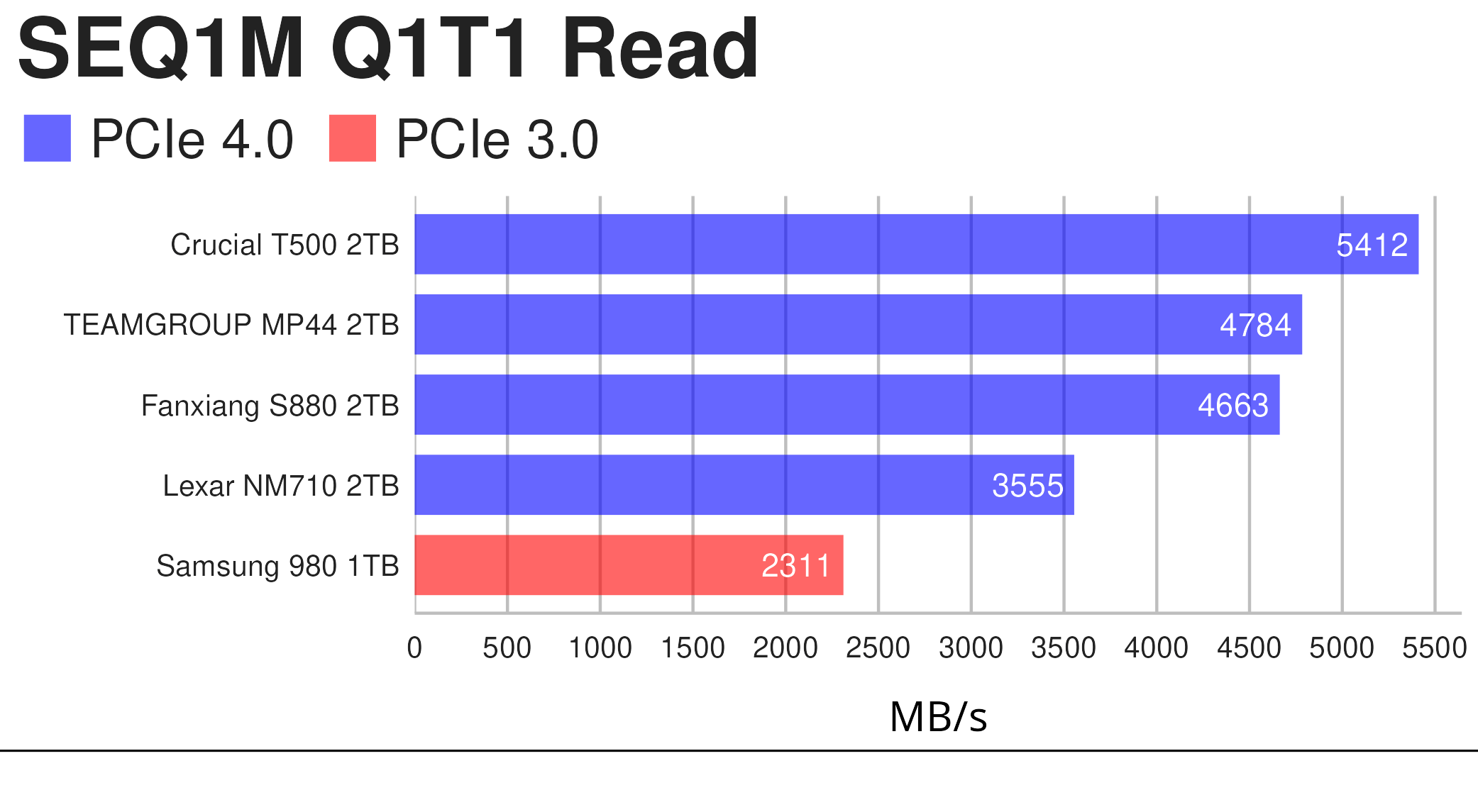
In this sequential read test, the Crucial T500 NVMe fairs better but remember it’s a more expensive drive than the TEAMGROUP MP44 which comes in second and still offers very good sequential performance. It’s faster than the drives around its price point (Fanxiang and Lexar).
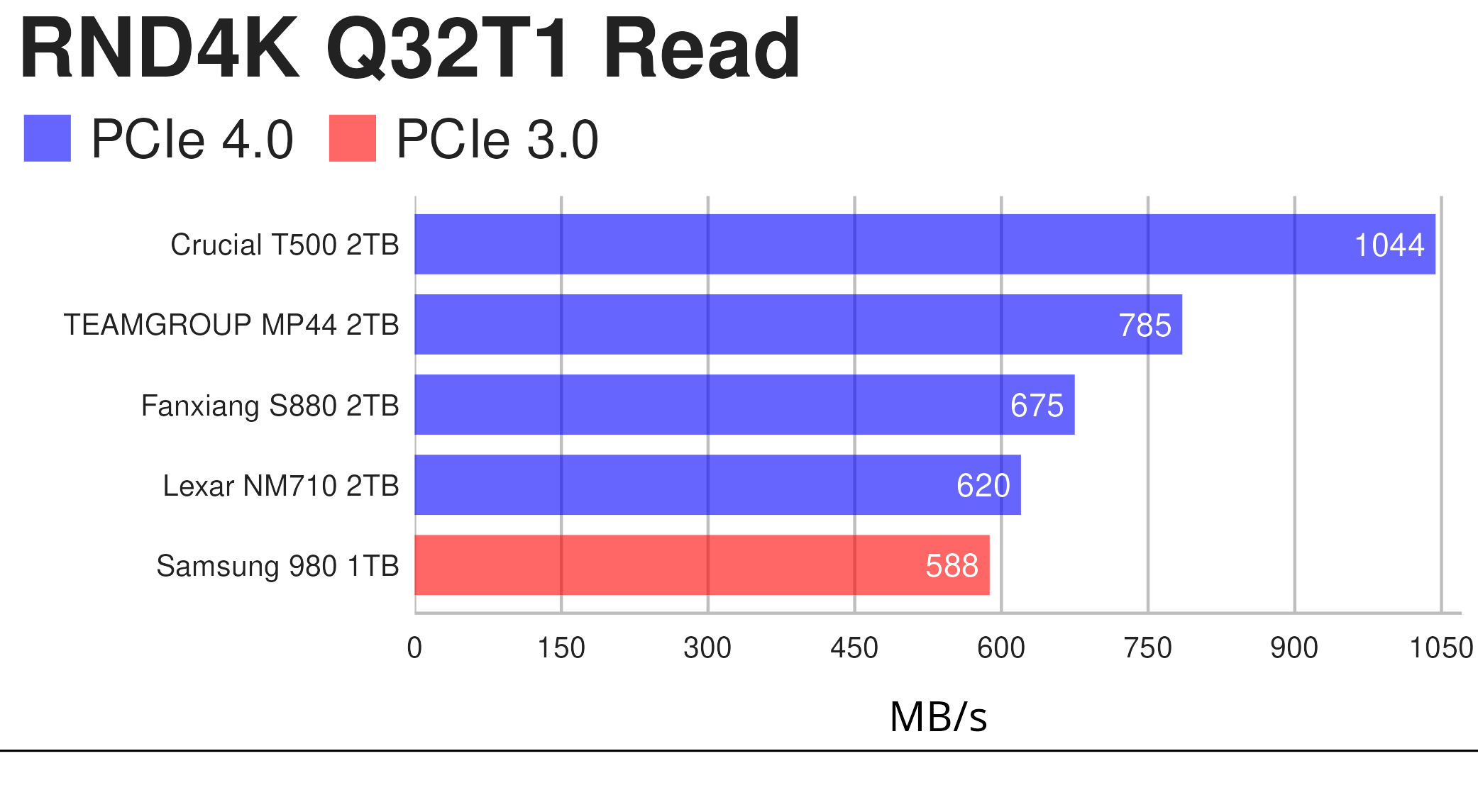
As expected, the DRAM T500 is faster, but the TEAMGROUP MP44 achieves 785 MB/s which is significantly faster than its peers.
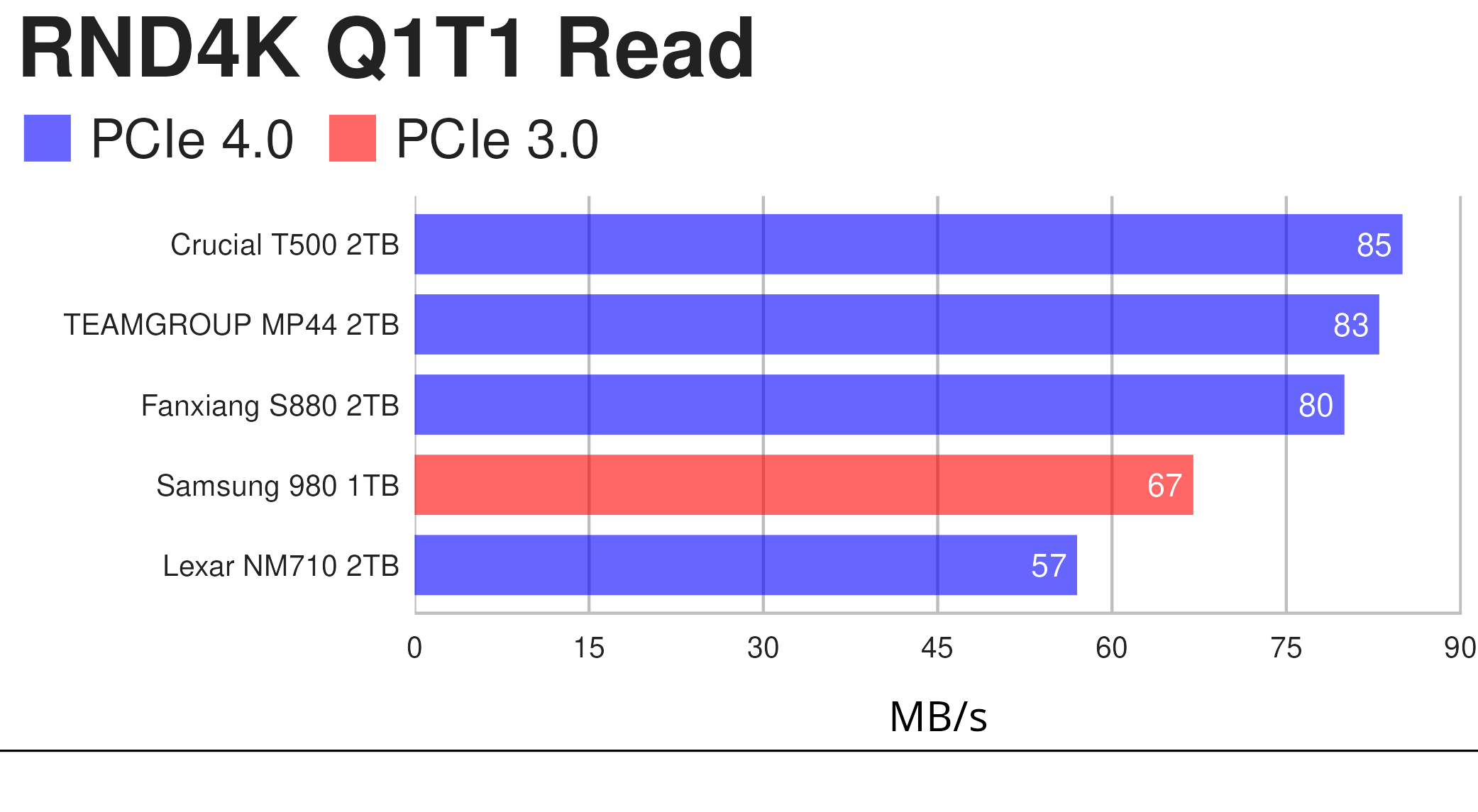
The final read test represents more straightforward and common tasks. The TEAMGROUP MP44 performs admirably in this test too showing that it’ll be excellent for everyday tasks such as booting up the Linux operating system and starting software.
We also repeated the above benchmarks for write speeds which are below.
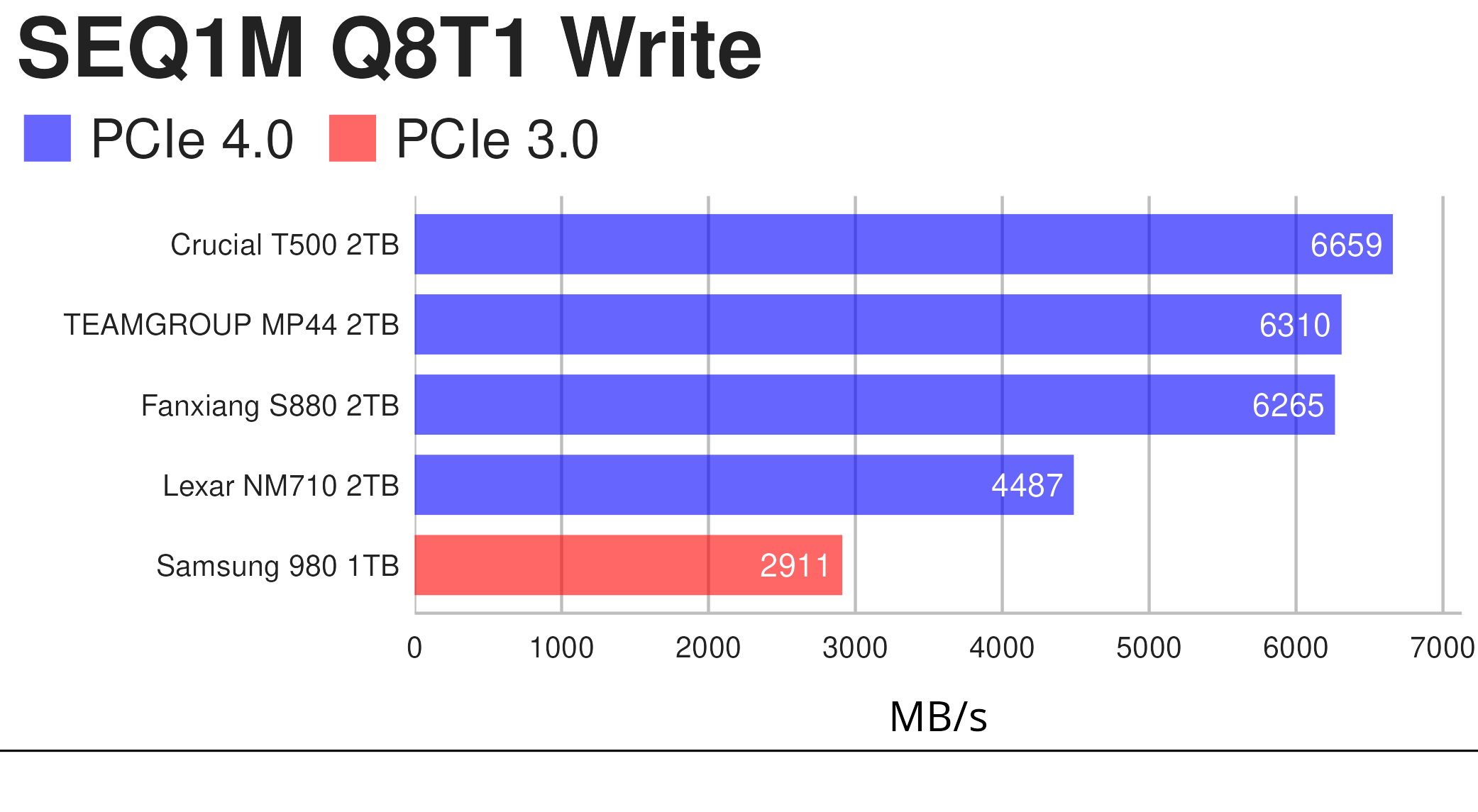
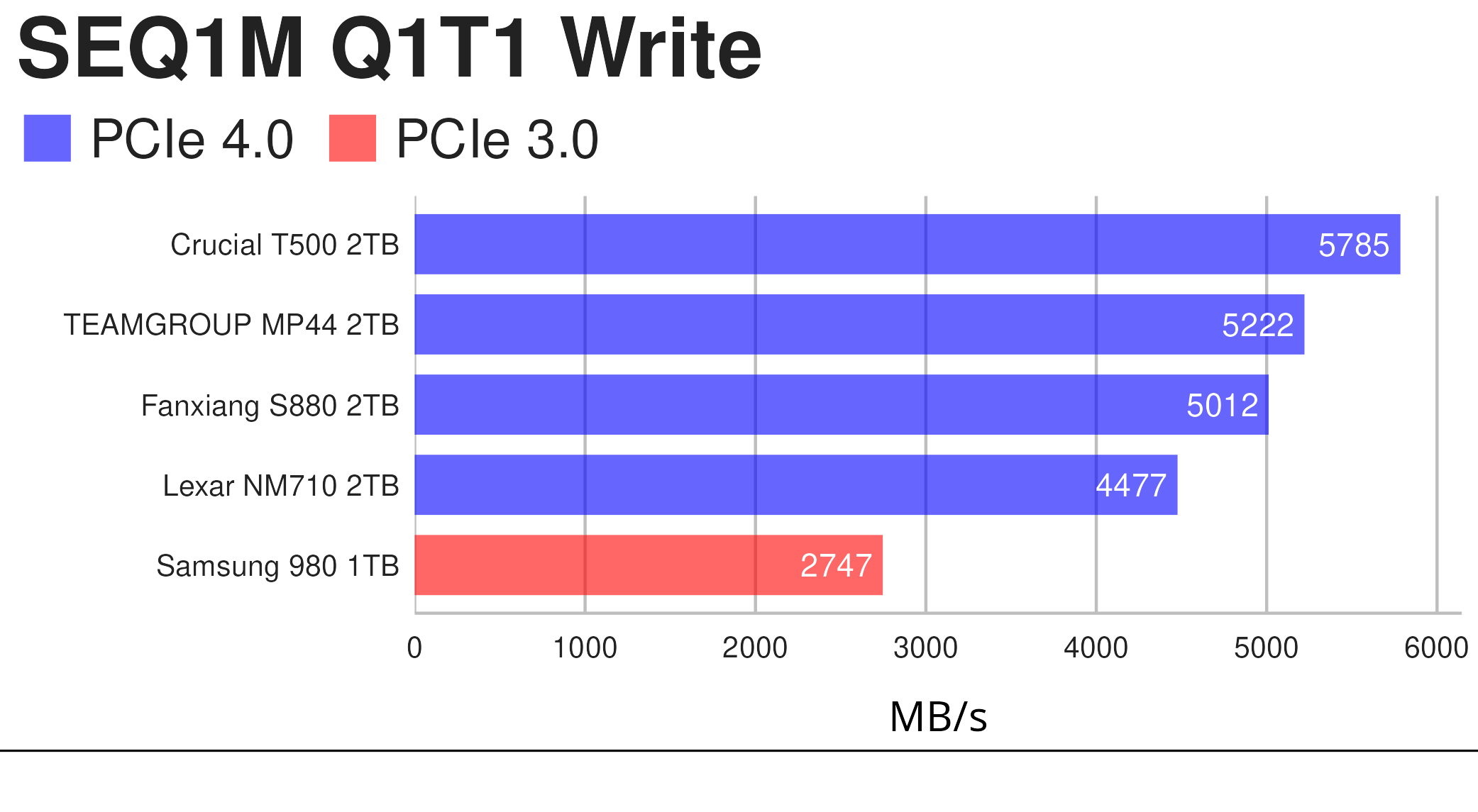
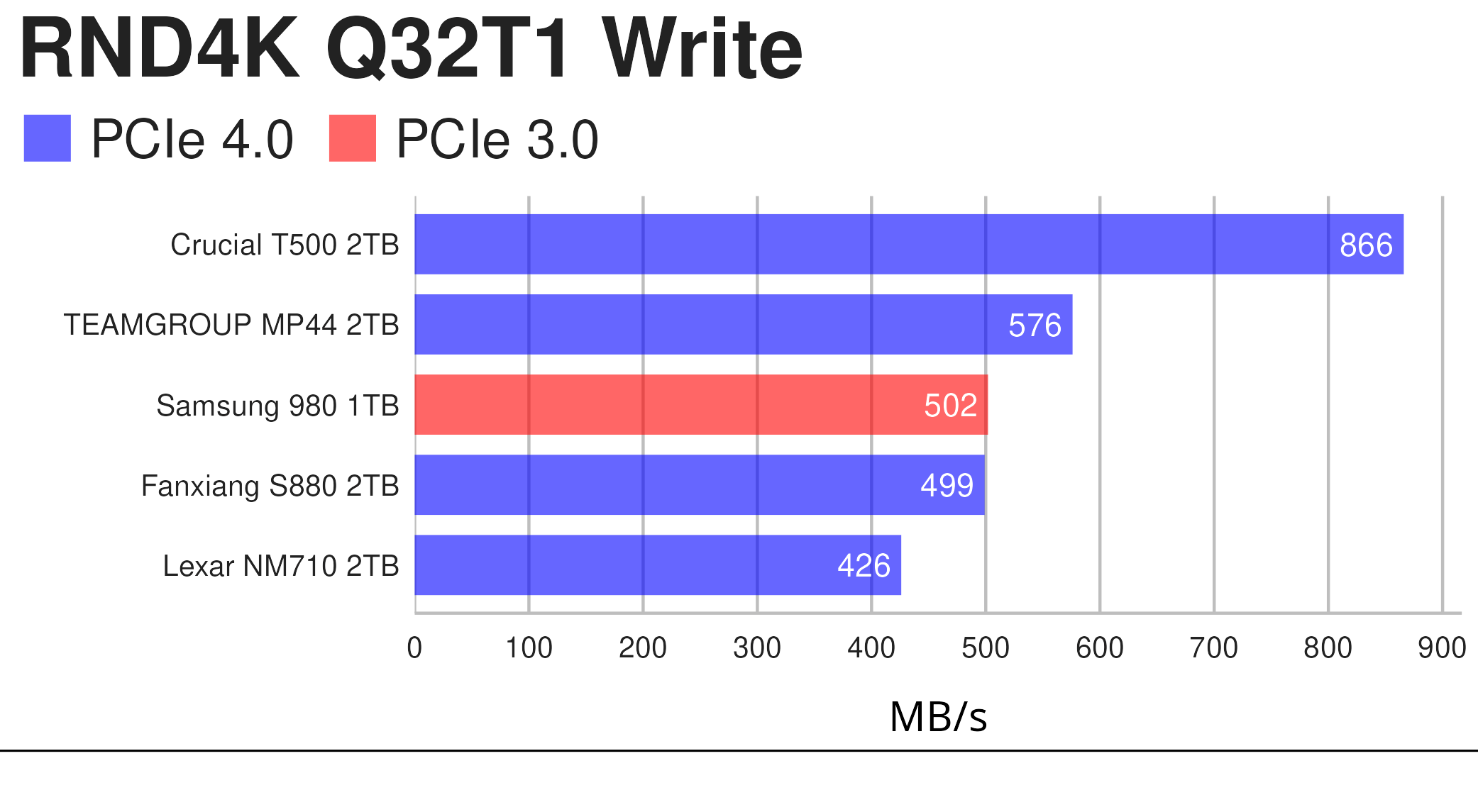
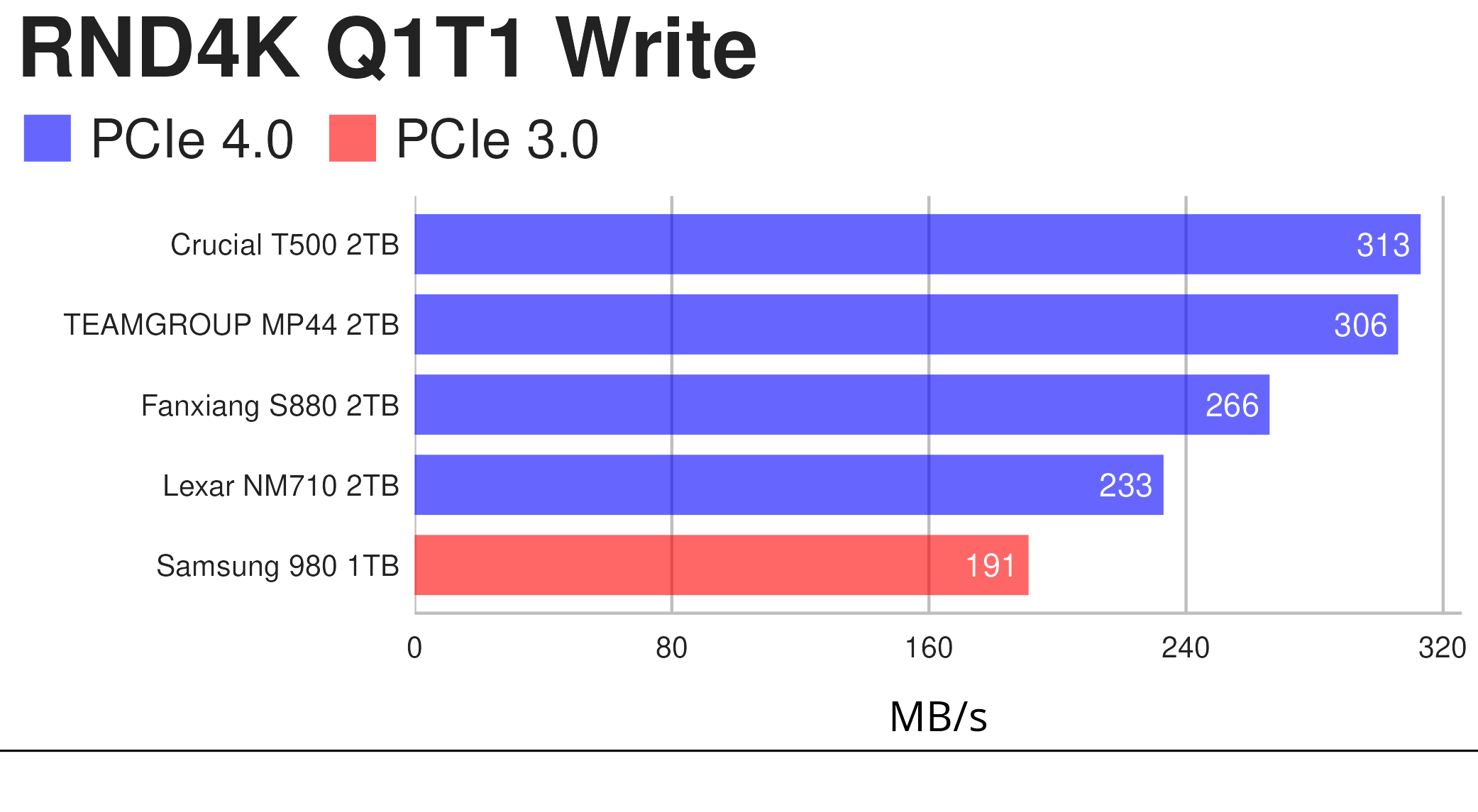
Official write specifications are only part of the performance picture. Most SSDs implement a write cache, which is a fast area of (usually) pseudo-SLC programmed flash that absorbs incoming data. The write saturation results for the 2TB MP44 are better than expected for its price point.
We are very impressed by the performance of the MP44 which comfortably beat its DRAM-less rivals in every test.
We also carried out real-life tests, the results of which are within margin of error. Typical Linux desktop applications don’t perform sufficient random writes to make DRAM essential. Naturally in some synthetic tests a comparable DRAM NVMe scores significantly higher, but they typically are far more expensive. The MP44 never slowed down even when writing 900GB to the 2TB drive. We are very impressed by its sustained performance from our testing.
We also tested how long it took to read 75GB installed files from the MP44 to another drive. The drive turned in a very fast time in this real-world transfer, and is significantly faster than the Fanxiang and Lexar drives.
Pages in this article:
Page 1 – Introduction and Specifications
Page 2 – Benchmarks
Page 3 – Summary
